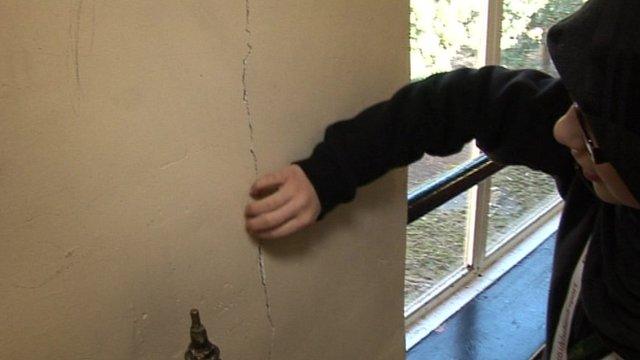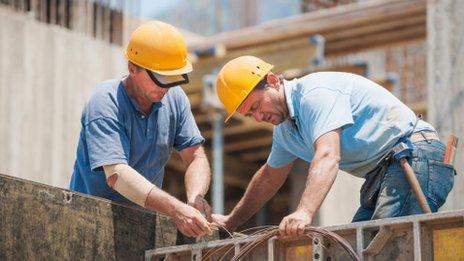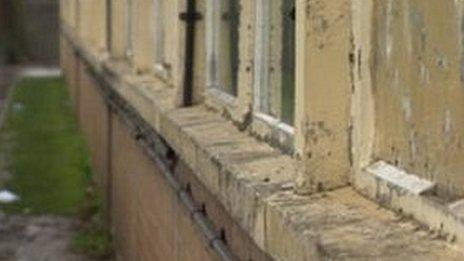Poor school buildings 'damaging pupils' health and education'
- Published

The best school building designs boost children's learning and behaviour, says Riba
Too many British pupils are trying to learn in classrooms which are damaging their health and education, say architects.
And too many teachers are quitting, blaming stressful and overcrowded working conditions, says the Royal Institute of British Architects (Riba).
It blames rising pupil numbers and government cuts to capital funding.
England's Department for Education says it will invest £23bn in school buildings over the next five years.
The report comes weeks after 17 schools in Edinburgh schools were forced to close due to concern over the standard of construction.
The newly-constructed schools had all been built under the same public private partnership contract.
'Poor'
According to Riba's analysis of government figures, external published last year, only 5% of 60,000 buildings in 18,000 schools surveyed in England were in top condition, performing as intended and operating efficiently.
The report also highlights separate figures, external published by a construction journal in 2014 which suggested almost a quarter (23%) of councils in England rated the condition of school buildings in their areas as "extremely poor" or "very poor".
"From damp, leaky buildings to serious issues like exposure to asbestos, too many pupils are trying to learn in classrooms that are damaging to their health - and their education," says the report.
And an overwhelming majority (90%) of 500 teachers surveyed by ComRes for the report said good school buildings were crucial to improving children's learning and behaviour.
But almost half said their schools were too small for the number of pupils, and a quarter rated the buildings as poor or very poor.
Twenty-five said they had left jobs because of stressful, cramped working conditions, while 100 said they had considered quitting.
Under Labour, spending on school buildings in England rose from a low of £600m in 1996 to a peak of £7.6bn in 2010, says the report.
But the coalition government oversaw a 60% cut with more than 700 projects axed.

This school building was replaced thanks to government funding but too many are still of poor quality, says Riba
Many schools which had been promised new or refurbished buildings had not carried out essential maintenance on buildings scheduled for demolition so when their schemes were cancelled they faced huge bills to bring dilapidated buildings back into use.
It also meant that the more economical Priority School Building Programme attracted almost three times as many applications as it could fund when it was introduced in 2011, says the report.
"Broadly speaking, the minimum standards for PSPB schools represent a return to the standards of 15 years ago," say the authors, adding that the new buildings had been hugely variable.
This may not be a problem in itself, they say, but in the worst cases, schools have had to find an extra £500,000 to make buildings fit for purpose.
Some of the specified designs, such as narrow corridors and cramped toilet blocks, increase behaviour problems like bullying, and boost maintenance costs, they add.
The report recommends:
more design input from schools
more design flexibility, allowing schools to request features such as wide corridors
greater efforts to minimise maintenance costs.
Riba president Jane Duncan urged the government to review its school building programme.
"How can we expect our children to compete with the world's best when too many of our school buildings are sub-standard?" asked Ms Duncan.
Head teachers' leader Russell Hobby confirmed that many buildings were in very poor condition, with schools "forced to dip into reserves to carry our emergency repairs that act as mere sticking plasters".
A Department for Education spokeswoman said the Priority School Building Programme was "transforming run-down buildings to state-of-the-art facilities, targeting funding at those school buildings in the worst condition."
She said the scheme was cheaper and quicker to operate than the previous programme, with designs developed in consultation with experts "giving young people across the country the modern learning environment they need to unlock their potential".
- Published21 March 2013

- Published1 May 2014

- Published11 May 2013
